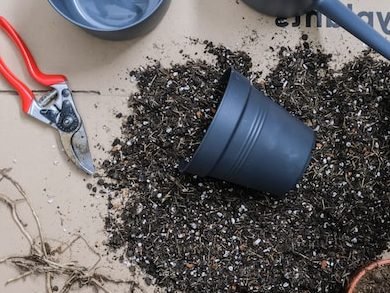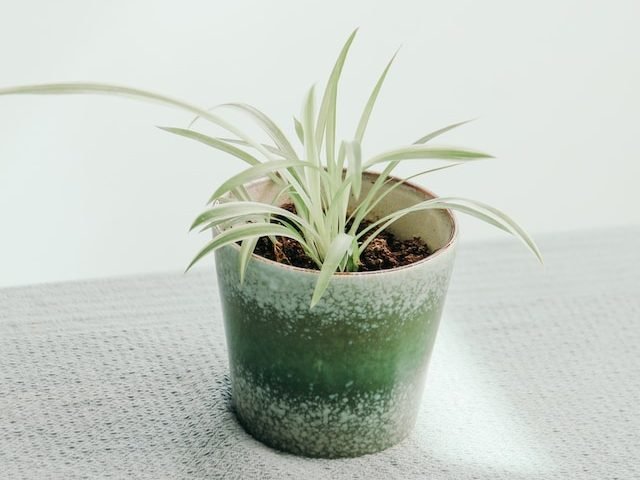
Propagating a Mistletoe Cactus is actually one of the easiest houseplants as there are so many different methods you can use. The fast-growing low maintenance nature of this plant also helps to success rate be pretty high for all types of propagation. In this article, we will go through each of the different methods so that you can figure out which is right for you and your plant.
Whilst you might want to propagate your Mistletoe Cactus to create new plants altogether (to keep or to gift to friends and family), you might also choose to propagate to make the mother plant fuller. Whatever the reason, each of the outlined methods below can be used to do just this!
Mistletoe Cactus Propagation Methods
There are many ways you can go about propagating a Mistletoe Cactus plant. We’ll show you step-by-step instructions for each of the main methods. Whilst there are a few more you can use, these are the ones with the most success and the ones we recommend to use.
Mistletoe Cactus plants can be propagated by:
- Stem cuttings in water
- Stem cuttings in soil
- Propagation through soil contact
How to propagate a Mistletoe Cactus through cuttings in water
This is one of the most common methods where you will see new roots on the cuttings pretty quickly.
Step 1: Cut a couple of stems off the mother plant.
Make sure you pick parts of the plant that are healthy and show no signs of pests or disease.
Step 2: Place in a propagation station filled with water.
Ensure this water is at room temperature as hot or cold water can shock and burn the cuttings, leading to an unsuccessful propagation. You want to make sure that the bottom third of the cutting is submerged in water. Any more and you risk the cutting rotting.
Step 4: Place the cuttings in bright but indirect light.
Direct light can burn the delicate leaves.
Step 5: Be patient.
Now, all there is left to do is refresh the water and wait. Luckily this type of Mistletoe Cactus propagation is relatively quick so you might see the roots developing in a week or two, but it can also take longer.
Step 6: Planting.
Once the roots are roughly half an inch long (1 cm) you can plant your Mistletoe Cactus in soil. Be very gently when transplanting as the roots will be delicate and breakable.
Step 7: Enjoy your new plants.
Whether you choose to grow the cutting as a new plant or pop it back into the parent plant to make it fuller, care for your cutting as you would your mother plant.
How to propagate a Mistletoe Cactus through cuttings in soil
Prepare the cuttings the same way as you would for water propagation. However, instead of popping them in water to grow roots, you will place them directly into cactus potting mix. Water the soil so it’s moist (not wet), and pop the cuttings in.
Check the soil regularly as it should be constantly lightly moist but never soggy. Avoid pulling the cutting out to check on growth as this can damage it. Instead, wait several weeks before checking in on root growth.
Mistletoe Cactus Propagation through soil contact
There are two ways you can do this method. Firstly, laying the cuttings on top of the potting mix. This is similar to how you would propagate succulent leaves and is a nice way to keep track of growth compared to when the ends of the cuttings are buried into the soil. The second method is simply looping the stems back into the pot of the mother plant.
Laying the cuttings on soil
This is quite a popular method of Mistletoe Cactus propagation as it’s super easy to do! Cut the stems as you would for the first two propagation methods but just rest them on top of a pot of potting mix. Press down slightly on the ends of the cuttings to ensure they are touching the soi.
The soil should be constantly moist too. Misting the soil frequently helps to maintain moisture levels. The cuttings should root in a few weeks and then can be transplanted into separate pots or back into the mother plant.
Looping the cuttings back into the soil
This method is handy if you want to make your mother plant look fuller. First water the mother plant so that the soil is moist. Then take a few strands of the plant and loop them back into and across the soil. Do not cut the strand – you want it to remain attached to the mother plant!
You will need to keep the soil’s top layer constantly moist until the plant develops roots. Ensure the soil is moist but never soggy and roots should begin to grow.
Mistletoe Cactus Propagation FAQs
What time of year is best to propagate my Mistletoe Cactus?
The best time to propagate Mistletoe Cactus is during the growing season of spring and summer. This gives the cuttings plenty of time to root and develop new leaves.
Is Mistletoe Cactus propagation easy?
This is one of the easiest plants to propagate, and propagation has a high success rate with most of the methods we mentioned above
Should I use a rooting hormone?
Whilst you can have plenty of success without using any rooting hormone, you can use rooting gel when propagating in water. This will speed up the growth of roots but it does have drawbacks. Using too much will damage the cutting which can be risky.
We hope that you have found this Mistletoe Cactus propagation guide useful. When deciding what method to use, it’s important to look at what you want to achieve from the propagation (new plants or making the mother plant fuller) as well as your experience and success with propagation in the past.
But as long as you use the right steps and the environment is right for new root growth, you shouldn’t have any troubles with this one.
To learn more about how to care for your plant after propagation, take a look through our Mistletoe Cactus care guide.















